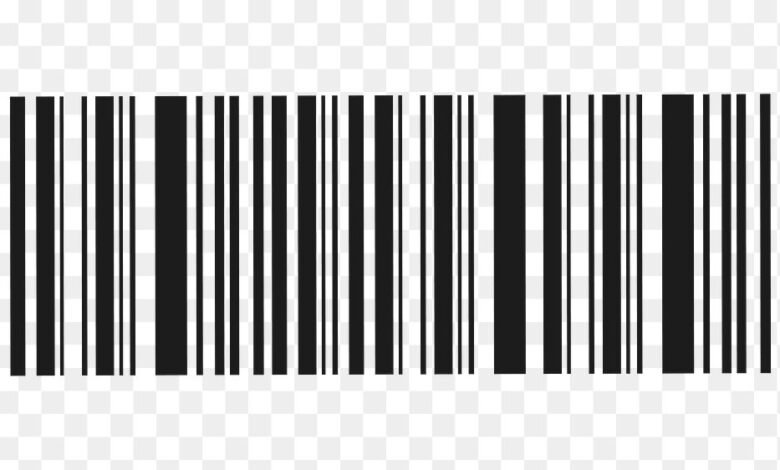The Evolution of Barcode Scanning: A Catalyst for Efficiency and Automation

In the realm of modern technology, barcode scanning has emerged as a pivotal tool that revolutionizes data capture, enhances efficiency, and automates processes across a myriad of industries. From retail and logistics to healthcare and manufacturing, barcode scanning has become an indispensable solution for streamlining operations, eliminating errors, and optimizing productivity. This article explores the evolution of barcode scanning, its fundamental principles, and the profound impact it has had on businesses worldwide. By delving into its applications, benefits, and future advancements, we uncover the transformative power of barcode scanning and its role in shaping the future of data capture.
Understanding Barcode Scanning
The Barcode scanning involves the use of optical scanners or mobile devices equipped with cameras to capture and interpret barcodes. Barcodes are machine-readable representations of data, consisting of a series of parallel lines of varying width. Each barcode contains encoded information, typically in the form of numbers or alphanumeric characters, which can be swiftly and accurately read by a barcode scanner.
There are two primary types of barcodes: 1D (linear) barcodes and 2D barcodes. 1D barcodes, such as UPC and EAN codes, are commonly found on consumer products, providing quick identification and pricing information. These barcodes consist of vertical lines of varying widths. On the other hand, 2D barcodes, including QR codes and Data Matrix codes, store information in a two-dimensional matrix format. They can hold larger amounts of data, including text, URLs, and multimedia content.
Applications and Benefits of Barcode Scanning:
- Inventory Management and Retail: Barcode scanning has revolutionized inventory management and retail operations. By scanning barcodes on products, businesses can automate stock tracking, monitor inventory levels in real-time, and streamline the replenishment process. This enables precise stock control, reduces the risk of overstocking or stockouts, and optimizes supply chain management.
- Point of Sale (POS): Barcode scanning at the point of sale has transformed the retail industry. Cashiers can swiftly scan barcodes to register purchases, eliminating the need for manual data entry or pricing. This significantly reduces human errors, speeds up the checkout process, and enhances customer satisfaction.
- Asset Tracking: Barcode scanning is invaluable for asset tracking in various industries, including healthcare, manufacturing, and logistics. By affixing barcodes to assets, organizations can easily track their location, movement, and maintenance history. This enables efficient asset utilization, reduces loss or theft, and simplifies auditing processes.
- Healthcare: Barcode scanning plays a crucial role in patient safety and medication management within the healthcare industry. By scanning barcodes on patient wristbands and medication labels, healthcare professionals can ensure accurate medication administration, reduce the risk of medication errors, and improve patient outcomes. Barcode scanning also enables efficient tracking of medical supplies, equipment, and lab samples, enhancing overall operational efficiency in healthcare facilities.
- Document Management: Barcode scanning is increasingly employed in document management systems to streamline processes and improve efficiency. By assigning unique barcodes to documents, businesses can easily track and retrieve them, eliminating manual searching and reducing administrative overhead. This facilitates faster document processing, enhances collaboration, and improves compliance with record-keeping regulations.
Implementation Challenges and Considerations:
While barcode scanning offers numerous benefits, there are some implementation challenges and considerations to address:
- Infrastructure and Compatibility: Implementing barcode scanning requires compatible hardware, software, and systems. Businesses must ensure that their scanners, printers, and software solutions are compatible, scalable, and seamlessly integrate with existing systems. Additionally, mobile devices with built-in cameras can serve as cost-effective barcode scanners, but compatibility across different models and operating systems should be considered.
- Barcode Quality: The quality of barcodes is crucial for accurate scanning. Poorly printed, damaged, or smudged barcodes may not be readable by scanners, leading to errors and inefficiencies. Organizations must invest in high-quality printers and labels to ensure that barcodes are printed clearly, maximizing scanning accuracy.
- Training and User Adoption: Successful implementation of barcode scanning systems requires proper training and user adoption. Employees need to understand how to operate scanners, interpret barcode data, and troubleshoot issues. User training and ongoing support are essential to maximize the benefits of barcode scanning technology.
Future Trends and Advancements
Barcode scanning continues to evolve and adapt to emerging trends and technological advancements. Here are some future trends and advancements to watch:
- Mobile Scanning: As smartphones become more powerful and ubiquitous, barcode scanning applications are increasingly integrated into mobile devices. This allows businesses and consumers to scan barcodes using their smartphones, eliminating the need for dedicated scanners and providing greater convenience.
- Cloud Integration: The integration of barcode scanning systems with cloud-based platforms offers enhanced flexibility, scalability, and real-time data access. Cloud-based solutions enable centralized data storage, easy retrieval, and seamless integration with other business applications, facilitating data-driven decision-making and collaboration.
- Artificial Intelligence (AI): AI-powered barcode scanning algorithms can improve the accuracy and efficiency of barcode scanning processes. AI algorithms can analyze barcode images, recognize patterns, and extract data even from damaged or low-quality barcodes. This advancement reduces the need for manual intervention and enhances the reliability of barcode scanning systems.
- Internet of Things (IoT) Integration: The integration of barcode scanning with IoT devices enables real-time tracking and monitoring of assets. IoT-enabled barcode scanners can communicate with other connected devices, providing valuable data on asset location, status, and usage. This integration enhances supply chain visibility, enables predictive maintenance, and streamlines operations.
- Augmented Reality (AR): The fusion of barcode scanning technology with AR can unlock new possibilities for interactive and immersive experiences. By scanning a barcode, users can access AR content, such as product information, instructions, or virtual overlays. This integration can revolutionize industries like retail, education, and manufacturing by providing dynamic and engaging experiences.
Conclusion:
Barcode scanning has emerged as a transformative technology, empowering businesses to capture and interpret data swiftly and accurately. From inventory management and retail operations to healthcare and document management, barcode scanning offers significant benefits, including improved efficiency, reduced errors, and streamlined processes. While implementation challenges exist, advances in technology, such as mobile scanning, cloud integration, AI, IoT, and AR, promise to further enhance the capabilities and applications of barcode scanning. As businesses continue to adopt and leverage this powerful tool, they can unlock new levels of productivity, data-driven insights, and operational excellence. Barcode scanning is poised to play a pivotal role in the future of data capture and automation, driving innovation and shaping the way businesses operate in a digital world.


